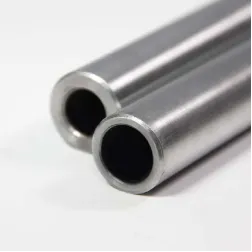-
Cangzhou Yulong Steel Co., Ltd.
-
Phone:
+86 13303177267 -
Email:
admin@ylsteelfittings.com
- English
- Arabic
- Italian
- Spanish
- Portuguese
- German
- kazakh
- Persian
- Greek
- French
- Russian
- Polish
- Thai
- Indonesian
- Vietnamese
- Zulu
- Korean
- Uzbek
- Hindi
- Serbian
- Malay
- Ukrainian
- Gujarati
- Haitian Creole
- hausa
- hawaiian
- Hebrew
- Miao
- Hungarian
- Icelandic
- igbo
- irish
- Japanese
- Javanese
- Kannada
- Khmer
- Rwandese
- Afrikaans
- Albanian
- Amharic
- Armenian
- Azerbaijani
- Basque
- Belarusian
- Bengali
- Bosnian
- Bulgarian
- Catalan
- Cebuano
- China
- China (Taiwan)
- Corsican
- Croatian
- Czech
- Danish
- Esperanto
- Estonian
- Finnish
- Frisian
- Galician
- Georgian
- Kurdish
- Kyrgyz
- Lao
- Latin
- Latvian
- Lithuanian
- Luxembourgish
- Macedonian
- Malgashi
- Malayalam
- Maltese
- Maori
- Marathi
- Mongolian
- Myanmar
- Nepali
- Norwegian
- Norwegian
- Occitan
- Pashto
- Dutch
- Punjabi
- Romanian
- Samoan
- Scottish Gaelic
- Sesotho
- Shona
- Sindhi
- Sinhala
- Slovak
- Slovenian
- Somali
- Sundanese
- Swahili
- Swedish
- Tagalog
- Tajik
- Tamil
- Tatar
- Telugu
- Turkish
- Turkmen
- Urdu
- Uighur
- Welsh
- Bantu
- Yiddish
- Yoruba

Nov . 19, 2024 01:00 Back to list
40nb pipe bends
Understanding 40nb Pipe Bends A Comprehensive Overview
In the world of industrial piping systems, the importance of efficient pipeline design cannot be overstated. One critical component of these systems is the pipe bend, which serves to redirect the flow of fluids and gases within the piping network. Among the various pipes available, 40nb (nominal bore) pipe bends hold a significant position due to their widespread application and versatility. This article delves into the characteristics, applications, and considerations surrounding 40nb pipe bends.
What is a 40nb Pipe Bend?
The term “40nb” refers to a nominal bore size of 40 millimeters, commonly used in various industries including plumbing, oil and gas, and chemical processing. Pipe bends are essential fittings that allow pipes to change direction without interrupting the flow of substances. A 40nb pipe bend would typically have an outer diameter of approximately 48.3 mm, and it’s available in various angles such as 45 degrees, 90 degrees, and 180 degrees.
Importance of Pipe Bends
Pipe bends are crucial for several reasons. Firstly, they facilitate fluid flow by generating smoother transitions than straight pipe connections, which can minimize turbulence and energy loss. This efficiency is particularly vital in systems handling sensitive or high-velocity fluids. Secondly, bends help navigate complex routing requirements in confined spaces, enabling designers to create more compact and efficient layouts. Finally, the strategic use of bends can reduce the need for additional fittings and joints, leading to lower material and labor costs.
Materials Used
40nb pipe bends can be manufactured from a variety of materials depending on their intended use. Common materials include
1. Carbon Steel Durable and cost-effective, carbon steel bends are widely used in oil and gas, water supply, and HVAC systems. Their strength and mechanical properties allow for high pressure and temperature applications.
2. Stainless Steel Known for its corrosion resistance, stainless steel pipe bends are favored in industries dealing with corrosive materials or where hygiene is paramount, such as food processing and pharmaceuticals.
3. PVC and Other Plastics In lighter applications, such as plumbing and drainage, plastic bends offer flexibility and corrosion resistance at a lower cost.
4. Special Alloys For extreme conditions, custom alloy bends may be fabricated to withstand high temperatures, pressures, or corrosive environments.
40nb pipe bends

Manufacturing Processes
The production of 40nb pipe bends involves several methods, including
- Molding This process is often used for plastic bends and allows for complex shapes and sizes. - Bending Metals like stainless and carbon steel are typically bent using hydraulic bending machines, which control the angle and radius of the bend. - Welding In some cases, welded bends are created by joining sections of pipe at specified angles, providing additional strength for high-pressure applications.
Applications
The application of 40nb pipe bends is vast and diverse. They are foundational components in
- Industrial Pipelines Transporting oil, gas, or chemicals, where direction changes are necessary. - Fire Protection Systems Ensuring that water can be routed effectively through various parts of a building or industrial site. - HVAC Systems Allowing for airflow adjustments in both residential and commercial settings.
Considerations When Selecting Pipe Bends
When choosing the appropriate 40nb pipe bend for a project, several factors should be considered
1. Material Compatibility The selected material must align with the substances being transported to prevent degradation or contamination. 2. Pressure Ratings Bends must be rated to handle the pressure levels of the system to ensure safety and functionality. 3. Radius of Bend The bend radius influences flow characteristics; tighter bends may create more turbulence and pressure loss.
4. Installation Space The physical constraints of the installation site can dictate the angles and lengths of the bends required.
Conclusion
40nb pipe bends are an essential component in piping systems, contributing to the efficient transport of fluids and gases across diverse industries. Their choice of materials, manufacturing processes, and careful consideration of application requirements play vital roles in ensuring that they meet the demands of their intended use. As industries continue to evolve, the role of pipe bends will remain crucial to achieving optimal performance in fluid transportation systems.
Latest news
-
ANSI 150P SS304 SO FLANGE
NewsFeb.14,2025
-
ASTM A333GR6 STEEL PIPE
NewsJan.20,2025
-
ANSI B16.5 WELDING NECK FLANGE
NewsJan.15,2026
-
ANSI B16.5 SLIP-ON FLANGE
NewsApr.19,2024
-
SABS 1123 FLANGE
NewsJan.15,2025
-
DIN86044 PLATE FLANGE
NewsApr.19,2024
-
DIN2527 BLIND FLANGE
NewsApr.12,2024
-
JIS B2311 Butt-Welding Fittings LR/SR 45°/90° /180°Seamless/Weld
NewsApr.23,2024











